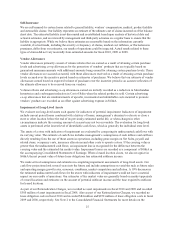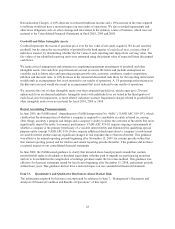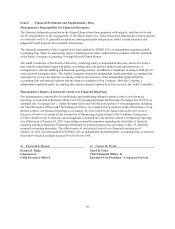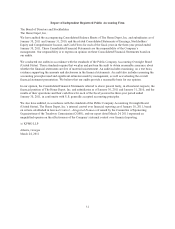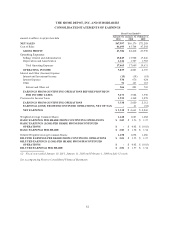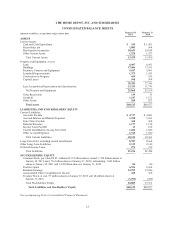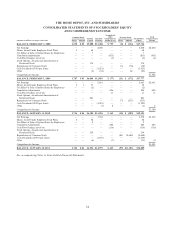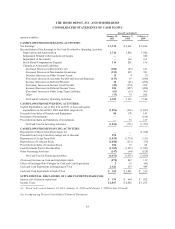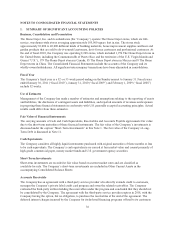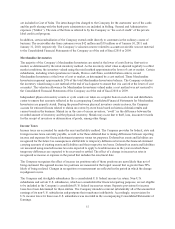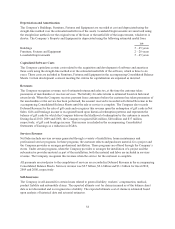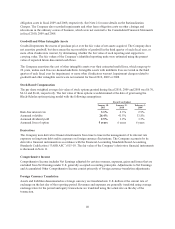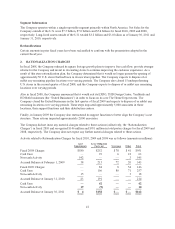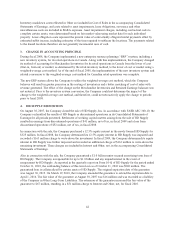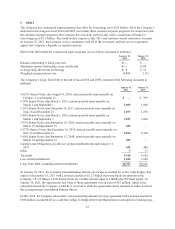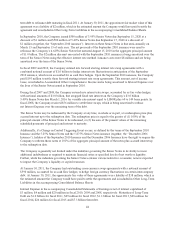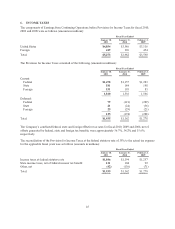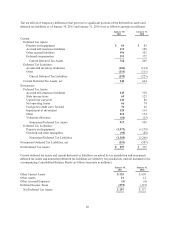Home Depot 2010 Annual Report Download - page 42
Download and view the complete annual report
Please find page 42 of the 2010 Home Depot annual report below. You can navigate through the pages in the report by either clicking on the pages listed below, or by using the keyword search tool below to find specific information within the annual report.NOTES TO CONSOLIDATED FINANCIAL STATEMENTS
1. SUMMARY OF SIGNIFICANT ACCOUNTING POLICIES
Business, Consolidation and Presentation
The Home Depot, Inc. and its subsidiaries (the “Company”) operate The Home Depot stores, which are full-
service, warehouse-style stores averaging approximately 105,000 square feet in size. The stores stock
approximately 30,000 to 40,000 different kinds of building materials, home improvement supplies and lawn and
garden products that are sold to do-it-yourself customers, do-it-for-me customers and professional customers. At
the end of fiscal 2010, the Company was operating 2,248 stores, which included 1,976 The Home Depot stores in
the United States, including the Commonwealth of Puerto Rico and the territories of the U.S. Virgin Islands and
Guam (“U.S.”), 179 The Home Depot stores in Canada, 85 The Home Depot stores in Mexico and 8 The Home
Depot stores in China. The Consolidated Financial Statements include the accounts of the Company and its
wholly-owned subsidiaries. All significant intercompany transactions have been eliminated in consolidation.
Fiscal Year
The Company’s fiscal year is a 52- or 53-week period ending on the Sunday nearest to January 31. Fiscal years
ended January 30, 2011 (“fiscal 2010”), January 31, 2010 (“fiscal 2009”) and February 1, 2009 (“fiscal 2008”)
include 52 weeks.
Use of Estimates
Management of the Company has made a number of estimates and assumptions relating to the reporting of assets
and liabilities, the disclosure of contingent assets and liabilities, and reported amounts of revenues and expenses
in preparing these financial statements in conformity with U.S. generally accepted accounting principles. Actual
results could differ from these estimates.
Fair Value of Financial Instruments
The carrying amounts of Cash and Cash Equivalents, Receivables and Accounts Payable approximate fair value
due to the short-term maturities of these financial instruments. The fair value of the Company’s investments is
discussed under the caption “Short-Term Investments” in this Note 1. The fair value of the Company’s Long-
Term Debt is discussed in Note 11.
Cash Equivalents
The Company considers all highly liquid investments purchased with original maturities of three months or less
to be cash equivalents. The Company’s cash equivalents are carried at fair market value and consist primarily of
high-grade commercial paper, money market funds and U.S. government agency securities.
Short-Term Investments
Short-term investments are recorded at fair value based on current market rates and are classified as
available-for-sale. The Company’s short-term investments are included in Other Current Assets in the
accompanying Consolidated Balance Sheets.
Accounts Receivable
The Company has an agreement with a third-party service provider who directly extends credit to customers,
manages the Company’s private label credit card program and owns the related receivables. The Company
evaluated the third-party entities holding the receivables under the program and concluded that they should not
be consolidated by the Company. The agreement with the third-party service provider expires in 2018, with the
Company having the option, but no obligation, to purchase the receivables at the end of the agreement. The
deferred interest charges incurred by the Company for its deferred financing programs offered to its customers
36



